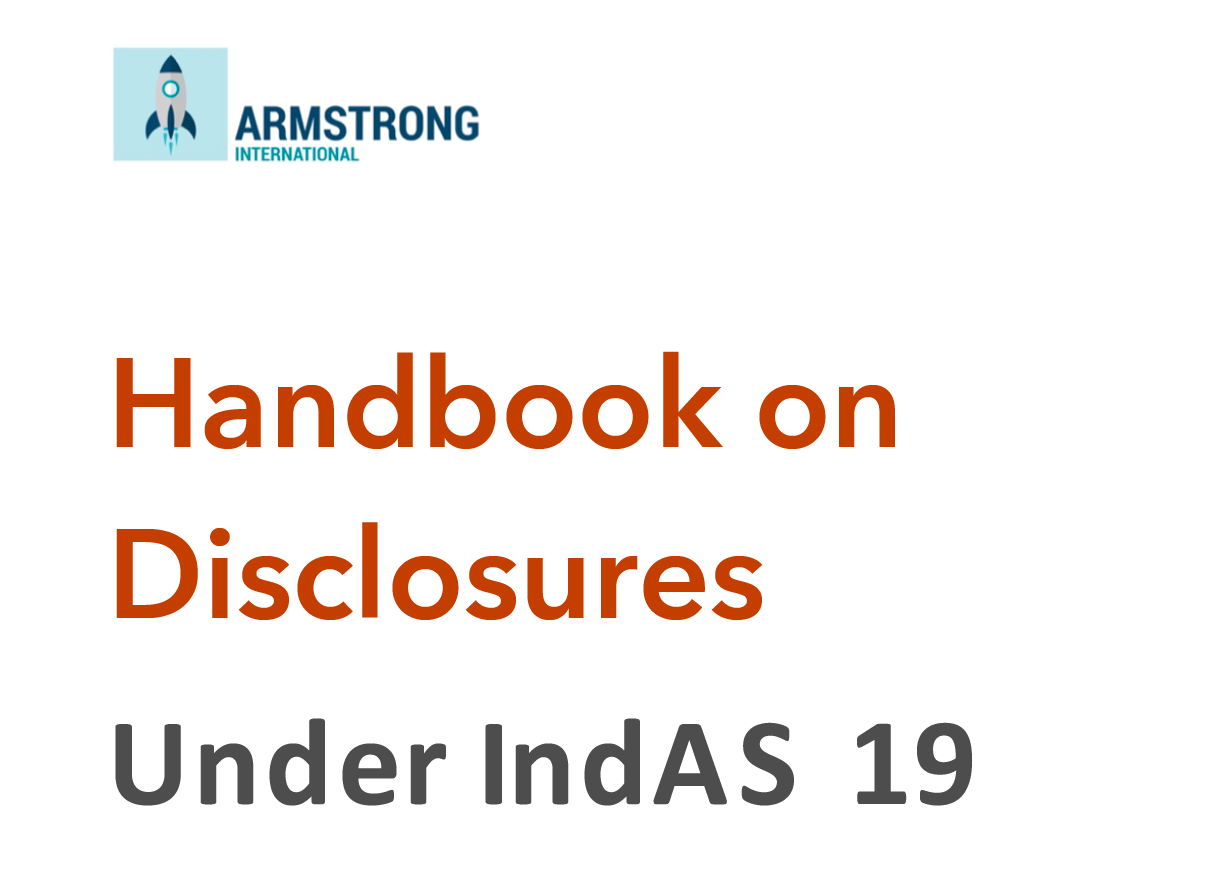Contact
Home Knowledge Base
IND AS 19 Handbook on Disclosures
Ind AS 19 recognizes the liabilities and expenses for employee benefits, that arise when an employee renders service to a company. The cost of the employee benefit schemes to a reporting entity are generally recognized in profit and loss as service cost and net interest cost, and in Other Comprehensive Income (OCI) as remeasurements. Ind AS 19 describes the accounting policy to be followed for a wide range of employee benefit schemes, including benefits provided for rendering service such as short-term employee benefits (compensated absences, medical benefit, housing/car benefit etc), long term employee benefits (gratuity, pensions) and termination benefits.
Ind AS 19 recognizes the liabilities and expenses for employee benefits, that arise when an employee renders service to a company. The cost of the employee benefit schemes to a reporting entity are generally recognized in profit and loss as service cost and net interest cost, and in Other Comprehensive Income (OCI) as remeasurements. Post-Employment plans are classified into defined Contribution Plans and Defined Benefit Plans. To account for Defined Benefit Plans, the present value of the defined benefit plan is estimated by actuarial valuation methods, and the fair value of plan assets are deducted and any effect of the asset cost is adjusted. Long Term Employee Benefits are accounted on a discounted basis using a discount factor.
In this publication, we present a list of disclosures mandated under IndAS 19 Actuarial Valuation reporting along with examples and explanations of the figures that are to be reported under this accounting standard.

Some of the employee benefit plans we cover in the handbook, with examples on reporting financial figures under Ind AS 19 include:
Short Term Employee Benefits
Under IndAS 19, Short term employee benefits consist of all benefits that are expected to be settled within a period of 12 months after the end of the reporting period during which the employee has rendered their service. This includes paid annual leave, paid sick leave, non-monetary benefits such as medical care, housing etc. Under IndAS 19, an entity shall recognize short term employee benefit obligations due to its employees as expense and liabilities without any discounting, after deducting the amount already settled to the employees.
Defined Contribution Plans
Defined Contribution Plans are plans where the reporting entity’s obligation is limited to the amount it contributes to an employee benefits fund, and has no additional obligation of any kind. This is different from defined benefits plan, under which an entity’s obligation is to provide defined benefits to current and past employees. Thus, in a defined contribution plan, the obligation towards employee benefits is straightforward and limited by its contribution towards the plan and is measured on a non-discounted basis for all obligations that are to be settled within a period of 12 months after the end of the reporting period. For settlements that may occur outside the 12-month period, a discounting rate is used. No other actuarial assumptions are required to measure the obligation or expense of a defined contribution plan, and there is no scope for actuarial gains or losses.
Defined Benefit Plans
Under Ind AS 19, Accounting for post-employment benefit plan assumes significant importance, as it requires the use of actuarial assumptions to measure the obligations that the reporting entity (company) will be liable for. While accounting for post-employment benefit plans, the Projected Unit Credit Method (PUC method) is utilized to make a very close and reliable estimate of the cost to the reporting entity of the benefit that its employees have earned in return for the services rendered to the company. In making this estimate, actuarial assumptions such as discount rate, salary growth rate, attrition rate and mortality rate are utilized. Furthermore, the benefits due at a future date are discounted in order to determine the present-day value of the obligations.
The reporting entity has to recognize certain obligations in its balance sheet. This includes the net defined benefit liability or when it has a surplus in the defined benefit plan, the defined benefit asset. A surplus may arise in the defined benefit liability when the plan has been overfunded or where actuarial gains have arisen. This surplus is treated as an asset, since it can be used to generate future benefits such as reduction in contributions, or cash refunds to the parent entity or to another plan.
Multi-employer plans
A company participating in multi-employer plan can account for its proportionate share in the multi-employer defined benefit obligation, plan assets and costs associated with the plan. However, if the conditions are such that there is no consistent and reliable basis for allocating the obligation, plan assets and cost to individual entities participating in the plan, or if there is not sufficient information about the plan, then the reporting entity accounts for the plan as if it were a defined contribution plan.
Other long-term employee benefits
Other long-term employee benefits include long term paid absences, disability benefits, profit sharing and bonuses, if they are not settled within a period of 12 months after the end of the reporting period. Ind AS 19 requires a simplified method of accounting of such other long-term employee benefits and is not subject to the same level of complexity as post-employment benefits. Measurements for Other Long-Term Employee benefits are not recognized in the OCI. The surplus or deficit should be recognized, and also the service cost, net interest of the DBO liability (asset) and remeasurement of the net defined benefit liability (asset) should be recognized in the profit and loss.
© Copyright 2020. All Rights Reserved Home | Contact Us | Knowledge Base | Privacy | Terms of Use
